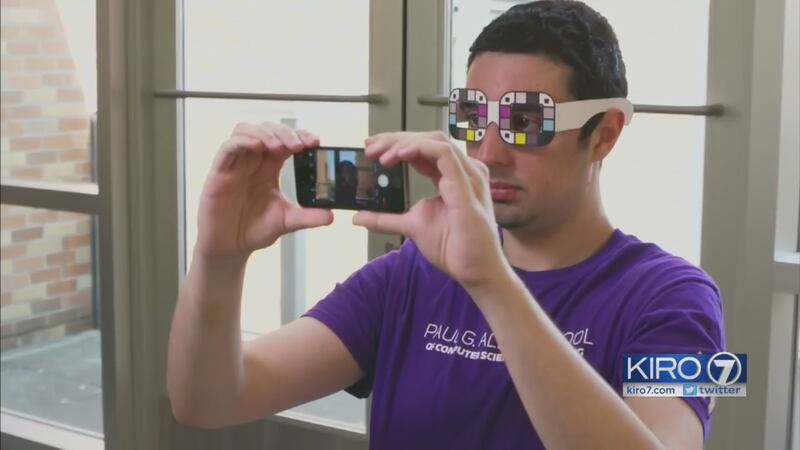University of Washington researchers are working on an app called BiliScreen that could use a smartphone camera to help detect an early symptom of pancreatic cancer and other diseases.
Here is a Q and A about the work. See a full video report about the app and the research at the UW on KIRO 7 News from 5-6:30 p.m.
Q: What is BiliScreen?
A: BiliScreen uses a smartphone camera, computer vision algorithms and machine learning tools to detect increased bilirubin levels in a person's sclera, or the white part of the eye.
Q: What does increased bilirubin indicate?
A: One of the earliest symptoms of pancreatic cancer, as well as other diseases, is jaundice, a yellow discoloration of the skin and eyes caused by a buildup of bilirubin in the blood. The ability to detect signs of jaundice when bilirubin levels are minimally elevated — but before they're visible to the naked eye — could enable an entirely new screening program for at-risk individuals.
Q: How is bilirubin currently screened?
A: The blood test that doctors currently use to measure bilirubin levels — which is typically not administered to adults unless there is reason for concern — requires access to a health care professional and is inconvenient for frequent screening. BiliScreen is designed to be an easy-to-use, non-invasive tool that could help determine whether someone ought to consult a doctor for further testing. Beyond diagnosis, BiliScreen could also potentially ease the burden on patients with pancreatic cancer who require frequent bilirubin monitoring.
Additional questions and answers below the trending stories list.
TRENDING NOW:
- North Korea fires missile that passes over northern Japan and into the sea
- Local detectives dig for evidence at house where 3 brothers had obsession with young children
- GRAPHIC: Video shows Kent carjacking suspect being dragged by car
- 350 alligators at risk of escaping flooded Texas rescue
- VIDEO: Seattle taking steps to ban plastic straws and silverware
Q: How can the eyes be a key to determining bilirubin levels?
A: In adults, the whites of the eyes are more sensitive than skin to changes in bilirubin levels, which can be an early warning sign for pancreatic cancer, hepatitis or the generally harmless Gilbert's syndrome. Unlike skin color, changes in the sclera are more consistent across all races and ethnicities.
Yet by the time people notice the yellowish discoloration in the sclera, bilirubin levels are already well past cause for concern. The UW team wondered if computer vision and machine learning tools could detect those color changes in the eye before humans can see them.
Q: How successful have the tests of the app been?
A: In an initial clinical study of 70 people, the BiliScreen app — used in conjunction with a 3-D printed box that controls the eye's exposure to light — correctly identified cases of concern 89.7 percent of the time, compared to the blood test currently used.
Q: When could I expect to see the BiliScreen app?
A: There is no timeline but UW researchers are planning to conduct more studies and improve the algorithm to increase success in identifying cases of concern. The initial thought
Cox Media Group








